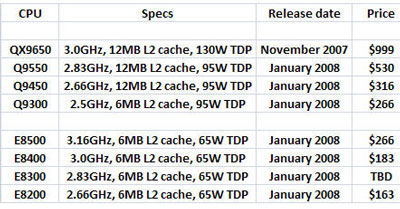Google (GOOG) is so vast that it's hard to keep up. But it's not just search, or even the new Web-based apps, which is extending the tentacles of the search-engine giant into territory beyond the reach of Microsoft (MSFT). Here are 5 lesser-known but nevertheless interesting Google tools , code snippets, and professional tech training materials.
, code snippets, and professional tech training materials.
Before I get to the list, some musings on how Google approaches product development, which is certainly unlike any other company.
On the one hand, Google is incredibly retro in its research model; it's like the old Bell Labs, or IBM when it was in its glory days. You've got engineers, programmers, and PhDs of various specialties working on stuff, with little or no pressure to produce stuff that can be monetized.
However, whereas Bell Labs or IBM (IBM) keep projects in their respective labs—and many never saw the light of day--until they were refined into a commercial product with a clearly defined market, that concept seems to be alien to Google. The search-engine giant rolls out anything and everything, from the tiniest Java widget to the biggest app (like Google Earth), and everything in between.
This is vexing on several fronts. First off, Google seems to give little guidance as to how "baked" something is. (As is, in it half-baked or fully cooked?) At least with Microsoft, there's a clear model: The first release of a product is bit rough, with improvements to come in the first service pack.
Secondly, Google gives no hints as to where its thousands of projects might ultimately take the company. Sure, the search business is throwing off so much money that Google can pursue this take with nary a care about its bottom line. And we know that Web apps, followed by mobile (gPhone anyone?) are the next big areas after search.
Probably, Google itself doesn't know where it's headed, and its leadership believes that this "throw stuff against the wall and see what sticks" model is a far better way to pick winners and losers than to make bets internally. They're probably correct about this.
I guess I shouldn't complain. Google has so much stuff going, that there's always something to peer into. Plus, its model of releasing anything and everything provides us all with universal, and usually free, access to the fruits of its research.
Here are the latest five:
Free Security Training Check out this security video: "What Every Software Engineer Needs To Know About Security ."
."
Neil Daswani, the Google engineer and security expert who hosts the video, has posted accompanying slides.
This stuff is like getting university-level security training, for free.
But wait, there's more (as they say on late-night TV)! Here's another one, called How To Break Web Software.
Summer Of Code Update Summer's over, but Google's Summer of Code 2007 lives on (here.)
This is the annual deal where actual Googlites invite student-aged Google wannabees to apply for grants and mentoring to pursue their open-source software projects. The 2007 edition of this software Woodstock of sorts involved 900 students. Since it's all open source, detailed info and much of the source code on everything is posted.
While there's a wealth of material, most of it is low-level stuff, i.e., software modules which add functionality to existing projects such as Eclipse, OpenOffice.org, and hundreds of less-known efforts.
All in all, it has the feel of a valuable resource for software professionals, but it doesn't easily yield its secrets, especially to a blogger who has to crank out daily posts.
Flight Simulator Credit for turning up this one goes to the uber-geek magazine and blog MAKE: (The capital letters and colon are part of the name, so don't blame me, blame them. I guess "Stuff" was taken, and "Electronics" is old-fashioned.)
Anyway, MAKE:'s blog, here, discovered that you can turn Google Earth into a flight-simulator game, using a cheat sheet that Google has posted, here.
Google cheat sheets Speaking of cheat-sheets, there's a third-party site, called Google Guide. Set up by one Nancy Blachman, it's billed as an interactive tutorial and search reference for users at all levels.
Google Guide has a nice cheat sheet for search, posted here.
Another blogger who specializes in search tips is Mary Ellen Bates, of Bates Information Services. Here's her Feb. 2007 article on Little-Known Google Tools. (It's a perfect adjunct to my it 5 Google Tips To Improve Your Search Experience.
Also check out Bates's collection of InfoTips. They extend beyond Google to include Yahoo, Ask.com, and other sites.
Google itself has posted a rather rudimentary cheat sheet, here.
Ajax Stuff Number five on our list is more courseware, this time on Ajax, the asynchronous JavaScript and XML that's the newest big thing in Web development.
Google has posted a text and code Ajax tutorial.
There's also a video, Creating Tools for Ajax Development.
By the way, if you're not all videoed out, Google has its own developer channel on YouTube on which it's posted nine videos on Javascript, cluster computing, the Google Web Toolkit (aka GWT), and more. Watch that on your iPhone!

















